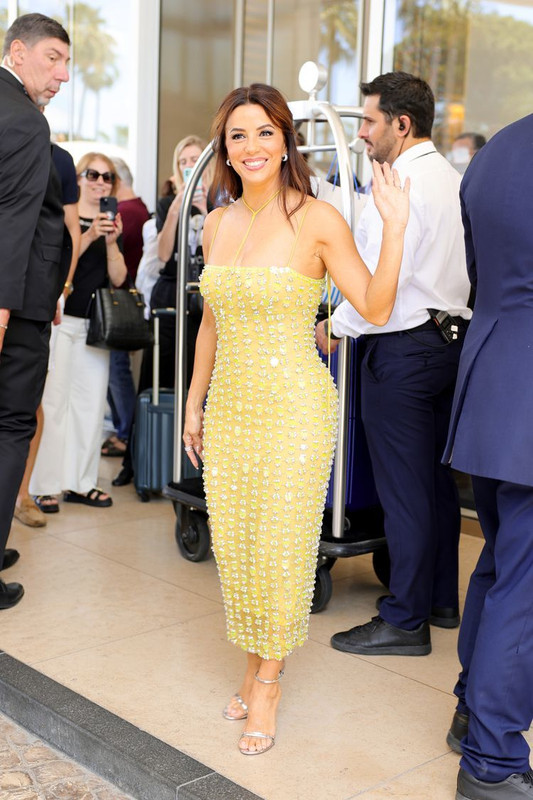There is a belief out there that the Kirk-Sulu uniform had a false yellow appearance (prior to the 2006 remaster) because of "a film stock thing." The idea was that the shirts were really green, and the yellow look came in only because 35mm Kodak film was somehow inaccurate for that color.
StarTrek dot com has an article somewhere making that claim. There's even an old interview with costume designer William Ware Theiss making that claim. He would buy white material and send it out to a dye shop with very exacting instructions for the shade of green he wanted. How could he be wrong?
It turns out, that shade of green is also a shade of yellow when the lights are bright enough. And Theiss' workspace would not be lit as brightly as the filming sets. So the shirts were really green backstage for him, and they were really yellow under the klieg lights, or sunlight on location.
These digital photos were taken minutes apart, with no "film stock thing" involved. From this I deduce that Eva Longoria is a huge TOS fan, and she slyly set out to prove the point without saying a word:


StarTrek dot com has an article somewhere making that claim. There's even an old interview with costume designer William Ware Theiss making that claim. He would buy white material and send it out to a dye shop with very exacting instructions for the shade of green he wanted. How could he be wrong?
It turns out, that shade of green is also a shade of yellow when the lights are bright enough. And Theiss' workspace would not be lit as brightly as the filming sets. So the shirts were really green backstage for him, and they were really yellow under the klieg lights, or sunlight on location.
These digital photos were taken minutes apart, with no "film stock thing" involved. From this I deduce that Eva Longoria is a huge TOS fan, and she slyly set out to prove the point without saying a word:








